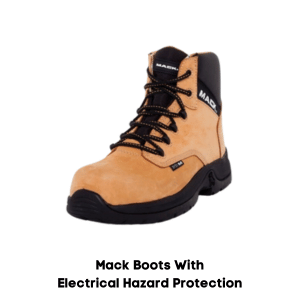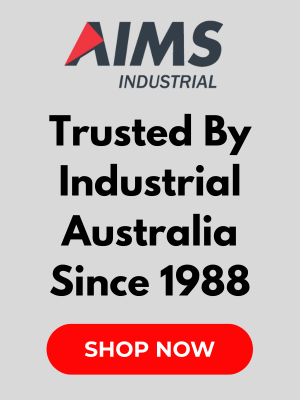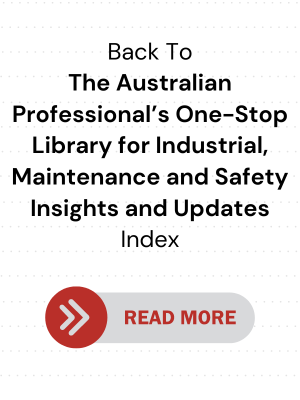FAQs on Safety Footwear (Standards, Classifications, Features, Maintenance, Etc)

.png)
In this article, we answer these questions:
- Is all ‘safety footwear’ the same?
- What is the Australian Standard for safety footwear?
- What about the ‘S’ classifications / safety ratings?
- How should safety footwear fit?
- How do I maintain (and when should I replace) them?
- Are regular shoes with added steel toe caps just as good?
- How bad could it be if I don’t wear them?
Is all ‘safety footwear’ the same?
Not really. AS 2210:2019 (more below) classifies them as follows:
| Footwear | Primary function | Features | Application |
| Safety | Protect the wearer's feet from significant impact, compression and potentially other hazards | Must include a protective toe cap(usually steel) able to withstand a minimum of 200 joules of impact force | Industries with potential foot injury -- such as construction, manufacturing, warehousing, mining and other heavy-duty industries -- where the risk of foot injuries from falling object, crushing, or equipment is high |
| Protective | Similar to safety footwear, but offers various levels of protection depending on the specific needs of the workplace | Must also include a protective toe cap, but the impact resistance requirement may be lower than safety footwear May also include penetration-resistant soles, metatarsal guards, electrical hazard resistance and other specialised features designed for specific work hazards |
Industries with potential for foot injury but where risks may be less severe than those requiring full safety footwear |
| Occupational | General use in workplaces with minimal hazards to the feet | Protective toe cap not required Focuses on general comfort, slip-resistance and support May include water resistance and other helpful features depending on the work environment. |
Industries with minimal potential for foot injury – such as healthcare, hospitality, food service and offices |
What is the Australian Standard for safety footwear?
The active, current and primary standard for safety footwear in Australia is AS 2210:2019, which is an adaption of ISO 20345:2011 (now superseded by ISO 20345:2021), focusing on the safety requirements for occupational footwear (and ensuring workplaces provide adequate foot protection to workers accordingly). To be more specific:
- AS 2210.3:2019 SAFETY Footwear specifies basic and additional (optional) requirements for safety protective footwear used for general purpose and covers exposure to mechanical risks (from impact, compression, punctures etc), slip resistance, thermal risks (insulation or resistance to heat and cold) and ergonomic behaviour etc.
- AS 2210.5: 2019 OCCUPATIONAL Footwear specifies basic and additional (optional) requirements for occupational footwear that is not exposed to any mechanical risks (impact or compression).
Note for Western Australia: While most relevant AS/NZS 2210:2009 designations / publications are already superseded by the 2019 publication, the Australian Business Licence and Information Service (ABLIS) site for Western Australia still refers to the AS / NZS 2009 and AS / NZS 2210 standards.
Limits: Footwear meeting the AS 2210.3:2019 guidelines might not be enough for environments with additional hazards, chemical exposure and extreme temperatures.
Other standards: Some brands – such as the Mack work boots AIMS sells -- also indicate American Society for Testing and Materials (ASTM 2413) standards on top of the AS/NZS 2210 and ISO 20345 standards mentioned above.
What about the ‘S’ classifications / safety ratings?
Aside from the standards mentioned above, safety footwear in Australia is also classified according to EN/ISO20345-specified protection features, with the main and most common standard of AS/NZS 2210.3:2019 (Occupational protective footwear) specifying three main classifications as:
- S1: Good for dry indoor or outdoor work where toe protection and basic slip resistance are needed
- S2: Same as S1, but for environments where water exposure is likely
- S3: Best for jobs with a risk of punctures from below (e.g., construction sites with nails) and wet conditions
Other classifications: Here is a complete list from the most basic SB down to S5 and everything in between:
| Class | Protection Features | ||||||||
| Toe protection | Anti-static | Heel energy absorption | Closed seat heel | Fuel and oil resistance | Peneration resistance | Puncture resistance | Water resistance | Note | |
| SB | ✔ | --- | --- | --- | --- | --- | --- | --- | --- |
| S1 | ✔ | ✔ | ✔ | ✔ | ✔ | --- | --- | --- | --- |
| S1P | ✔ | ✔ | ✔ | ✔ | ✔ | ✔ | In the mid-sole | --- | --- |
| S2 | ✔ | ✔ | ✔ | ✔ | ✔ | --- | --- | In the upper | --- |
| S3 | ✔ | ✔ | ✔ | ✔ | ✔ | In the mid-sole | --- | --- | --- |
| S4 | ✔ | ✔ | ✔ | ✔ | ✔ | --- | --- | Fully waterproof | Uppper can be made of a fully-molded material like rubber |
| S5 | ✔ | ✔ | ✔ | ✔ | ✔ | ✔ | In the mid-sole | Fully waterproof | Uppper can be made of a fully-molded material like rubber |
Note: Although based on ISO 20345, the AS/NZS 2210:2009 standard does not have S6 and S7 classifications. Nevertheless, some manufacturers might still use these terms to categorise their footwear features, particularly if they sell internationally.
 Important: Additional safety features might be needed for specific hazards. For example, metatarsal guards offer protection to the top of the foot. For electrical dangers, look for electrical hazard (EH) rated footwear, like this Mack Titan II.
Important: Additional safety features might be needed for specific hazards. For example, metatarsal guards offer protection to the top of the foot. For electrical dangers, look for electrical hazard (EH) rated footwear, like this Mack Titan II.
How should safety footwear fit?
Ill-fitting safety footwear can cause blisters, discomfort and even contribute to injuries. Improper sizing can also compromise the effectiveness of the safety features. Make sure your work boots have:
- Enough wiggle room for your toes
- Firm yet comfortable heel support
- No excessive pressure points anywhere on your feet
How do I maintain (and when should I replace) them?
To care for your work boots, make sure to:
- Follow the manufacturer's cleaning instructions
- Store in a cool, dry place
- Regularly inspect for damage or wear
It’s time to replace them when:
- The tread pattern is worn down
- There are visible signs of damage (cracks, punctures etc)
- The inner lining is deteriorated
- The footwear no longer fits correctly
Are regular shoes with added steel toe caps just as good?
No. Shoes not specifically designed and designated as safety footwear lack the structural integrity and other safety features required by the Australian Standard.
How bad could it be if I don’t wear them?
Here are various potential injuries from not wearing proper safety footwear at work:
Impact and crushing injuries
- Broken toes and foot bones: Heavy objects falling directly on the feet can cause severe fractures and crushing.
- Foot amputation: In extreme cases, heavy objects or machinery can crush the feet to the extent that amputation is necessary.
Puncture injuries
- Puncture wounds: Sharp objects such as nails, glass or metal can penetrate the sole of regular shoes, piercing the feet and causing deep, painful wounds.
- Infection: Puncture wounds carry a high risk of infection, which can lead to further complications.
Slip, trip and fall injuries (Here’s how to prevent them in the workplace.)
- Sprains and strains: Inadequate grip or lack of proper ankle support can lead to sprains or strains in the ankles, feet or even knees.
- Fractures: Slips and falls can result in broken bones in the feet, legs and hips.
- Head injuries: Severe falls caused by a slip due to improper footwear can cause concussions or other head injuries.
Foot fatigue and long-term issues
- Blisters and calluses: Constant pressure and friction from ill-fitting shoes can lead to painful blisters and calluses.
- Plantar Fasciitis: Lack of arch support and cushioning can contribute to this painful inflammation of the foot's connective tissue.
- Musculoskeletal problems: Over time, foot fatigue and improper support can lead to pain and issues in the knees, hips, and back.
Other risks
- Burns: Lack of heat-resistant or chemical-resistant footwear leaves your feet vulnerable to burns from hot substances or spills.
- Electrical shock: Non-conductive footwear won't protect against accidental contact with live electrical circuits.
AIMS' Note on Buying PPE and Workwear
- Hazard assessment: Identify the specific hazards you will likely be facing in your work environment. Consider potential risks such as chemical exposure, falling objects, loud noises, electrical hazards or biohazards. This assessment will guide you in selecting the appropriate PPE for the job.
- Appropriate materials: Different materials offer various protective qualities. Consider flame-resistant (FR) materials for fire hazards, chemical-resistant fabrics for handling hazardous liquids and high-visibility options for work in low-light environments.
- Compliance to occupational safety standards: Opt for PPE that meets the pertinent Australia Standard (AS), although some brands -- especially imports -- will have other compliance markings such as ANSI, OSHA, ANSI, NIOSH, oSA etc. Look for certifications on the product label to ensure the equipment has undergone rigorous testing.
- Proper fit and comfort: Proper fit is crucial for both comfort, dexterity and protection. Ill-fitting clothing can snag on machinery or restrict movement, potentially creating additional hazards. Choose sizes that allow for layering in cold weather without being overly bulky and consider adjustable options for items like hard hats or respirators.
- Maintenance and replacement: Inspect PPE before each use for signs of wear, tear or damage. Follow (and factor in) the manufacturer's instructions for cleaning and storage. Some materials may require specialised laundering, while others can be machine-washed. Check for durability to ensure the clothing can withstand frequent use and cleaning. Replace damaged or expired PPE immediately to guarantee your safety.
- Training: Ensure you and any employees understand how to properly use, wear, adjust, maintain and store PPE and workwear. Improper use can negate its protective benefits.



.png)